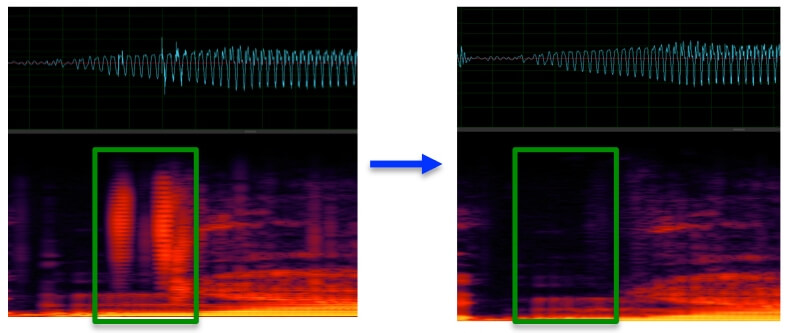At Adelphi, we offer professionally edited audio as a standard for all of our voice over projects. But what exactly does this mean? Here we will briefly look at what we do with the audio before we deliver it to our clients, turning the ‘raw’ unedited audio file into a professional clean sounding voice over file.
We also listen to the audio to check if errors have been made, all the segments have been recorded, the timing is correct, files are correctly split and named, we normalize the levels so all the audio is of the same volume, take out pauses etc. You don’t get this level of service when going to the freelance voice artist directly.
Background Noise
A sample of background noise
Our studios are equipped with high-quality professional condenser microphones, located in fully soundproofed vocal booths. This isolation, combined with a highly sensitive microphone means that even the quietest noises within the booth are recorded along with the spoken word. Slight electrical hums and low-frequency rumbles are inevitable, but these can be removed via noise prints. They can also include script rustling, chair squeaks, clothing shuffle, and even belly rumbling!
Our job in the production department is to clean these unwanted sounds out of the finished audio, as well as tidying up the file; topping and tailing the audio, altering the lengths of pauses to give a more natural read whilst removing errors/retakes so that we can deliver a nice clean audio to our clients.
In addition to these noises, there are many sounds created by the voice-over artist’s mouth that we want to get rid of from the final audio.
Plosives
Plosives occur when air hits the microphone’s diaphragm. Usually, we find this happens on letters such as p, t, b. These can be managed by using a pop shield, but any that sneak through can be edited out in post-production

Sibilance
Sibilance is caused by the airflow created when saying letters such as ‘S’ moving through the teeth of the voice-over artist. It creates a high-pitched hissing sound.

Mouth Clicks and Pops
Clicks and pops occur naturally within the mouth, and whilst a drink of water can help keep the mouth lubricated, these pesky noises can still be picked up by the highly sensitive microphone. These sounds have to be removed one by one in post-production.
Before and after editing
Breath and other unwanted sounds
We remove all breath sounds from our voice-overs, as well as any unwanted sounds noises they are created by the Voice Artist. This helps give a clear sounding final audio file, with no distractions from the message!

A Professional Audio Engineer should be able to edit 10 minutes of audio per hour, depending on the quality of the audio. Once we have gone through and cleaned up the entire audio file, and we have added any further processing, such as EQ and Compression, we have a fully edited audio file ready for delivery to our client.

Listen to the difference between raw unedited audio files and fully edited ones:
Raw 1
Edited 1
Raw 2
Edited 2
We offer delivery in a number of audio formats, such as MP3, MP4, WAV, WMA. We can also add the Voice-over to your video as well as adding music or sound effects to the finished audio.







